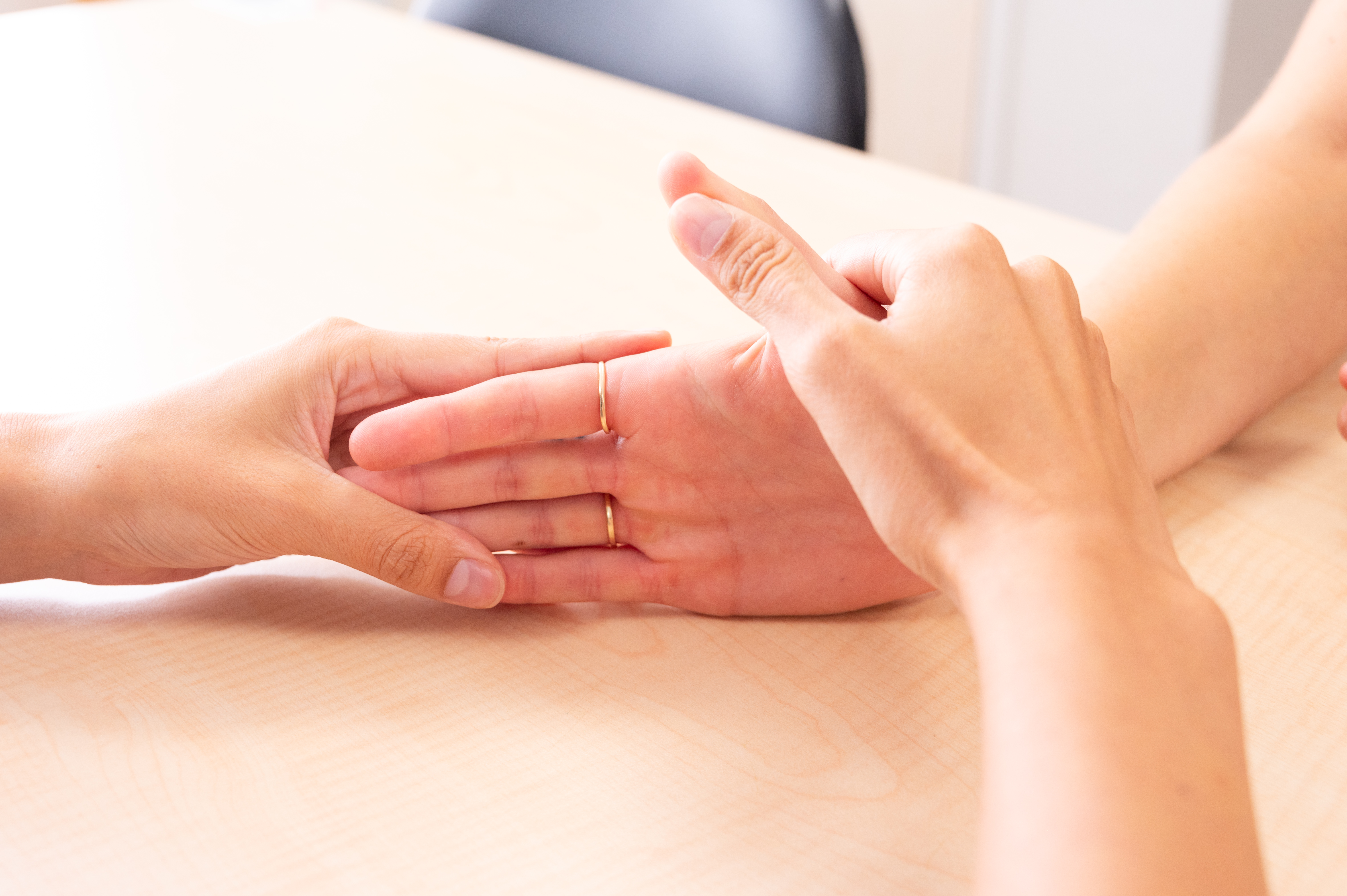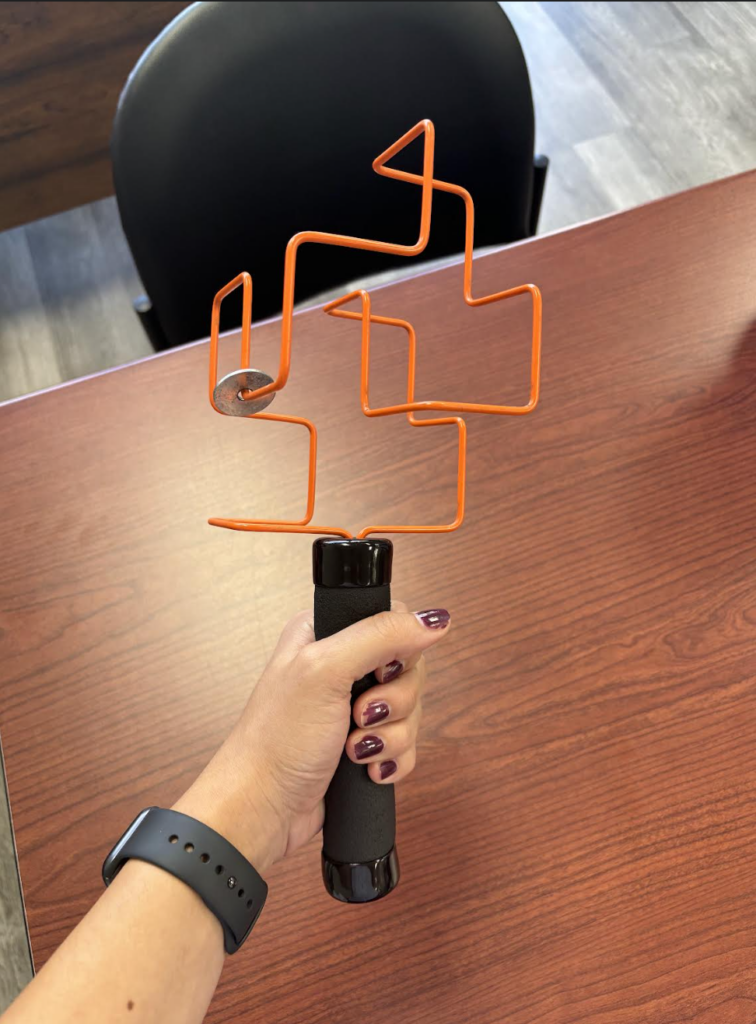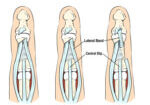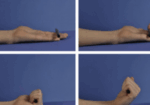Pain management techniques for wrist fractures
Distal radius fractures account for 17.5% of all fractures with a median age of 60.23
(Candela et.al, 2022). Pain management is a significant part of post wrist fracture
treatment due to limitations that pain incurs. Chronic Regional Pain Syndrome (CRPS) can
occur along with a distal radius fracture but will not be covered in this post due to its complexity.
There are two routes for intervention for a distal radius fracture, surgery and conservative
treatment. Both treatments involve similar aspects but timelines are typically different.
Conservative treatment usually involves casting for 6-8 weeks in order to allow the bone to heal.
Surgical intervention can be followed by casting for 2 weeks or prefabricated brace for 6 weeks.
Early techniques for Pain Management within fracture/surgical precautions:
Heat and Massage: Heat brings blood flow to the area and helps to soften tissues that may be
otherwise tight in order to guard the injured area. Massaging along the incision line and/or the
inflamed areas can help decrease edema and pain.

Light Passive Range of Motion: Moving the wrist in all planes of motion helps bring
proprioceptive input into the area and prevents increased stiffness which can cause unwanted
pain with movement. This is done within tolerance and no overpressure due to precautions.
Functional Light Finger and Wrist Mobility: Active range of motion helps to decrease adhesions
and push fluids away from the area. It also helps us retrain the brain to move within tolerance
and decrease the perception of pain.

Compression: Sometimes giving a patient proprioceptive input, such as compression, can help
to alleviate pain. If a patient”s wrist/hand is especially swollen, a piece of equipment such as a
compression glove can help provide input and decrease swelling, decreasing the amount of
pain.
Large Chain Movement: Large movements are helpful when pain is present for edema
management and proprioceptive awareness. It opens space for fluid and increases range of
motion for larger muscles while flossing the nerves through the upper extremity.
Candela, V., Di Lucia, P., Carnevali, C., Milanese, A., Spagnoli, A., Villani, C., & Gumina, S.
(2022). Epidemiology of distal radius fractures: A detailed survey on a large sample of
patients in a suburban area. Journal of Orthopaedics and Traumatology, 23(1).
https://doi.org/10.1186/s10195-022-00663-6
2 Comments
Leave a Comment
More To Read
Differential Diagnosis: Trigger Finger vs. Subluxing Sagittal Band Injury vs. Subluxing Lateral Band
Differential Diagnosis: Trigger Finger vs. Subluxing Sagittal Band Injury vs. Subluxing Lateral Band Hand therapists frequently encounter patients presenting with finger pain, clicking, and difficulty with tendon glide. Among the most commonly confused conditions are trigger finger, subluxing sagittal band injury, and subluxing lateral band. Each of these pathologies involves different anatomical structures and biomechanical…
Read MoreWrist Proprioception Ideas for Hand Therapy
Wrist Proprioception Intervention Ideas: By Ammie Ingwaldson Lack of wrist proprioception exercises can affect clients in the hand therapy setting with neurological and musculoskeletal conditions. Proprioception limitations are found in common conditions such as carpal tunnel syndrome, distal radius fracture, and CRPS (Valdes, Naughton & Algar, 2014). Proprioception is necessary during daily tasks to provide…
Read MoreIs HEP Just as Good as Therapy for Metacarpal Fracture Rehab?
Gülke, J., Leopold, B., Grözinger, D., Drews, B., Paschke, S., & Wachter, N. J. (2018). Postoperative treatment of metacarpal fractures – Classical physical therapy compared with a home exercise program. Journal of Hand Therapy, 31(1), 20-28. The Skinny – Medicine is moving towards a model that encourages less direct intervention and a more DIY focus…
Read MoreShoulder Pain: The Effectiveness of Conservative Treatment
Reference: Steuri, R., Sattelmayer, M., Elsig, S., Kolly, C., Tal, A., Taeymans, J., & Hilfiker, R. (2017). Effectiveness of conservative interventions including exercise, manual therapy and medical management in adults with shoulder impingement: a systematic review and meta-analysis of RCTs. British journal of sports medicine, 51(18), 1340–1347. https://doi.org/10.1136/bjsports-2016-096515 By: Tayler Roost The Skinny: This study…
Read MoreSign-up to Get Updates Straight to Your Inbox!
Sign up with us and we will send you regular blog posts on everything hand therapy, notices every time we upload new videos and tutorials, along with handout, protocols, and other useful information.







I found the explanation of early-stage methods, like heat, massage, and compression gloves, particularly helpful for reducing pain and swelling. The emphasis on active and passive range of motion to prevent stiffness also makes a lot of sense in promoting recovery. One question that comes to mind is: Are there specific exercises or techniques that might be more beneficial for long-term recovery once the initial pain subsides? It would be interesting to hear if others have found additional strategies helpful as healing progresses.
We are so happy you found this helpful. There are a variety of exercises that can be performed but sorta of depends on how you are progressing